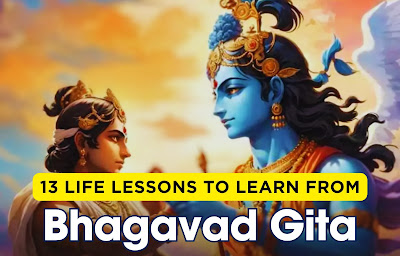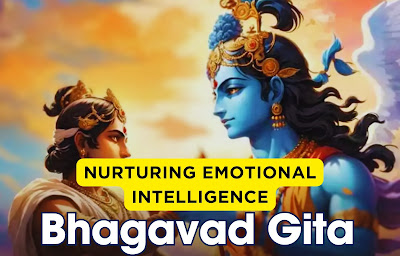When to Read Bhagavad Gita? || At What Age Bhagavad Gita has to be Read and How Bhagavad Gita's learnings can be applied in real life?
Introduction:
The Bhagavad Gita, a spiritual epic, transcends age barriers, offering timeless wisdom that resonates across generations. While there isn't a specific age requirement for delving into its teachings, understanding how to apply these profound lessons in real life is key.
The Bhagavad Gita's wisdom isn't bound by age; rather, it caters to seekers at different life stages. Young minds, driven by curiosity, find solace in its philosophical depth, while adults navigating life's complexities discover practical guidance.
Beginning the Journey:
There's no 'correct' age to start reading the Gita. Whether in adolescence, adulthood, or later years, the Gita welcomes all. For the young, it provides foundational principles; for the mature, nuanced insights; and for the elderly, solace and spiritual fulfillment.
Applying the Gita's Teachings:
1. Self-Discovery:
- In Youth: Foster self-awareness to navigate identity and purpose.
- In Adulthood: Reflect on experiences, aligning actions with core values.
- In Senior Years: Embrace self-discovery, finding peace in self-realization.
2. Decision-Making:
- In Youth: Cultivate ethical decision-making skills.
- In Adulthood: Navigate career and personal choices with wisdom.
- In Senior Years: Reflect on life's journey, making decisions aligned with inner truth.
3. Managing Relationships:
- In Youth: Learn empathy and compassion for harmonious connections.
- In Adulthood: Apply Gita's teachings for balanced relationships.
- In Senior Years: Nurture familial bonds, offering wisdom and love.
4. Dealing with Challenges:
- In Youth: Build resilience for academic and personal challenges.
- In Adulthood: Face professional hurdles with a composed mind.
- In Senior Years: Find solace in the Gita during life's inevitable challenges.
5. Spiritual Growth:
- In Youth: Explore spiritual concepts, fostering a sense of purpose.
- In Adulthood: Cultivate a deeper spiritual connection.
- In Senior Years: Seek spiritual fulfillment, embracing the Gita's wisdom.
Conclusion:
The Bhagavad Gita offers a timeless guide for all ages, fostering holistic development. Applying its teachings is a lifelong journey, adapting to the evolving needs of each life stage. As the Gita transcends time, so does its relevance in shaping a purposeful, balanced, and spiritually enriched life.




Comments
Post a Comment